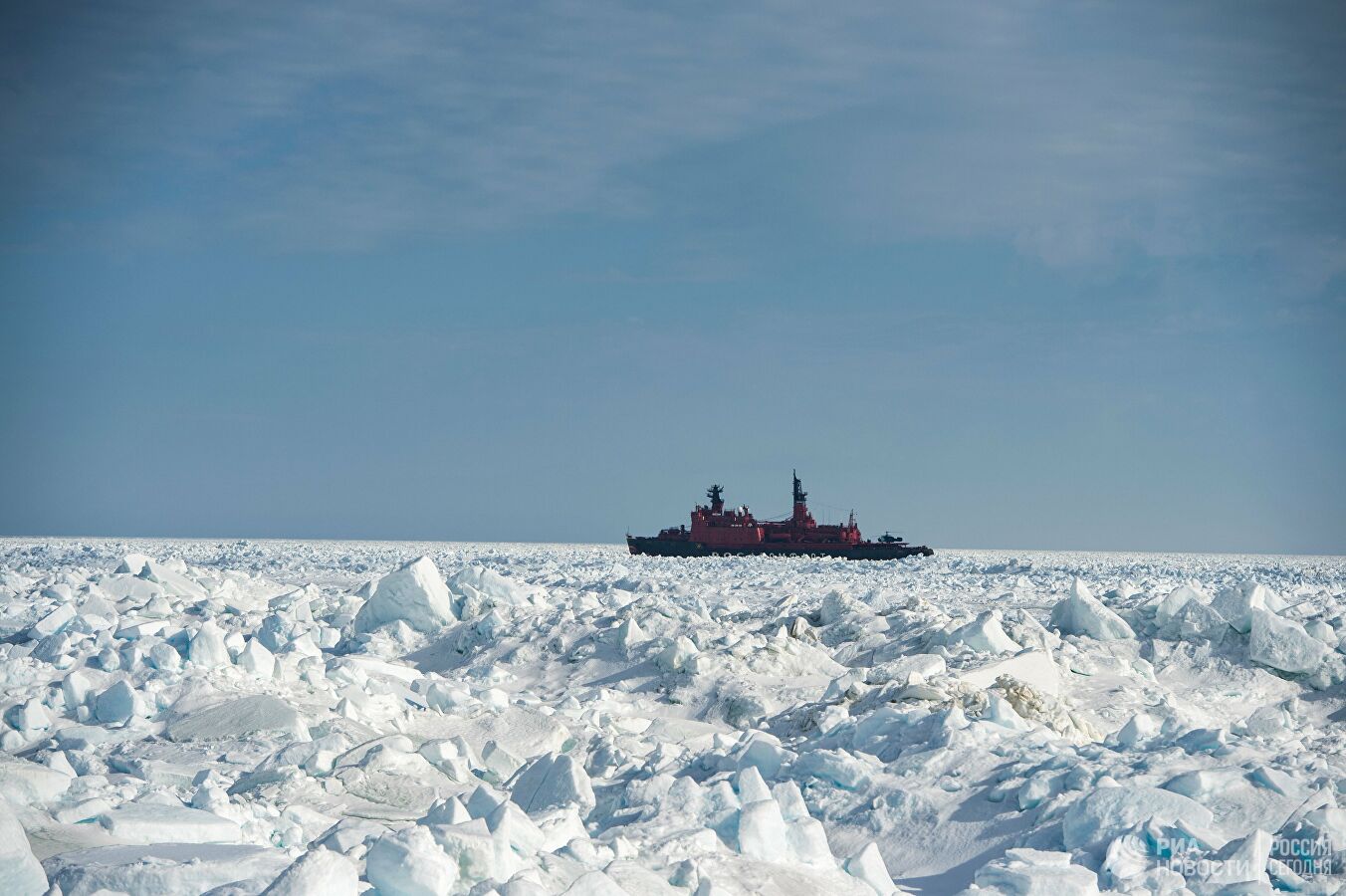The US Department of Defense has presented the Arctic Doctrine to Congress aimed at blocking the Russian Northern Sea Route (NSR). [pdf]
Experts are confident that in the coming years the Arctic will become an arena of confrontation. One side will comprise the Washington-led establishment that oppose the Northern Sea Route and the other side will be Russia and its partners.
A document, prepared by the Pentagon emphasized that the Arctic has a significant impact on US national security.
Washington’s main mission should be to “deploy a more deadly, resilient, flexible militant force that can provide a competitive advantage in this key region.”
This includes not only the Arctic Ocean, but also the Bering Strait and the sea corridor in the region of Greenland, Iceland and Norway.
Essentially, the issue is that the US has a small Arctic territory in Alaska, thus it needs more ground from which to exert pressure. This led it to attempt to convince allies to allow it unhindered and unlimited access to their northern regions.
So, in the Arctic Strategy, the US proposes a simple solution, for Canada to stop viewing the Arctic Corridor as its exclusive and internal waters. Despite it being provided by a UN resolution as such.
The secretary of the U.S. Navy, Richard Spencer, had earlier announced his intention to increase the strength of the American fleet in the Canadian zone of the Arctic Ocean and increase the number of military installations.
Many experts are sure that Trump’s desire to buy Greenland from Denmark is also explained by the US desire to obtain a military base in the polar region.
In addition, the “Arctic Doctrine” is aimed at weakening the main US competitors in the face of China and Russia in the region, and specifically their cooperation.
Washington is particularly concerned about the Northern Sea Route: the Americans see in this project an attempt by Moscow and Beijing to capture key locations in the northern latitudes.
Washington’s NATO allies, expectedly, share this concern. At the end of August, Norwegian Foreign Minister Ine Marie Erickson expressed concern about the environmental and economic aspects of the NSR and its intention to check the route for compliance with European standards.
The environmental arguments of the West weren’t quite applicable. Senior Advisor to the Russian Embassy in Norway Vladimir Isupov recalled that the NSR project is being implemented in Russian territorial waters and Oslo could simply observe how it progressed.
Of course, Russia isn’t alone in this “fight.” In early October, the Ambassador of the Republic of Iceland to Moscow, Berglin Asgeirsdottir, reported that Reykjavik “is very closely monitoring how the project is developing,” as well as considering the possibility of building an international port for large vessels passing along the Northern Sea Route.
South Korean President Moon Jae-in expressed the country’s wish to cooperate with Russia in developing the Northern Sea Route in September: 15 icebreaker tankers are currently being built at Korean shipyards to transport LNG along the Arctic route.
Experts have no doubt: in the coming years, the bulk of the flow of goods between the western and eastern hemispheres will go to the NSR. The route along this route is almost a month shorter than the traditional one – through the Suez Canal. Moreover, it is much safer: there are no Somali and other pirates.
Russia plans to annually transport 50 million tons of cargo via the NSR by the year 2024 – this is enshrined in the May decree of Russian President Vladimir Putin.
According to the head of the directorate of the Rosatom SMP Vyacheslav Ruksha, such an indicator can be achieved and possibly exceeded due to the export of energy from the Arctic LNG-2 complex, which is currently under construction, the Taimyr cargo base VostokUgol and Payakhskoye field.
It isn’t only going to be used to transport fuel.
The Omsk region is going to transport grain through the NSR for the countries of the Asia-Pacific region. In mid-October, Russian Deputy Minister of Agriculture Oksana Lut approved an export route through the Irtysh, Ob, Gulf of Ob, the port of Sabetta, and further through the NSR. The experiment will be held in July next year.
Russia will continue to implement large-scale Arctic projects.
“The Arctic as a region of the world is one of the most unexplored territories, therefore it is here that lies the potential that will give an impetus to future development for the whole world. <…> These are 80 percent of gas, 20 percent of oil and up to 100 percent of mineral reserves. We have counted more than 100 promising projects in which about 11 trillion rubles will be invested until 2030,” Director of the Arctic Agency for the Promotion of Investment and Business Support of the Far East, Dmitry Fishkin recalled.
MORE ON THE TOPIC:







Unless the US and Norway imposes a full naval blockade from the North Cape to Svalsbard I doubt that the US can do much to stop the flow of goods through the NSR. This is yet another area where the Russians have taken a lead while the US was busy taking a nap getting bogged down in the Middle East. The Russians have been developing their Arctic infrastructure for years. You snooze, you lose.
Yes, and a full blockade would be no short of an act of war, I think. Impeding flow of trade goods.
Geographically it would mean the Bering strait and coast of Norway as these are the only areas where USA can have influence.
” Moreover, it is much safer: there are no Somali and other pirates.”
To be replaced by American pirates in Arctic waters.
It would be an act of war indeed. And so close to Russian bases American ships would be in full range of every anti-ship missile in the Russian arsenal. And not of the puny American Harpoon kind. Big mofo’s capable of sinking carriers. No sane US commanders would dare risk his ship there. Only politicians think this stupidly.